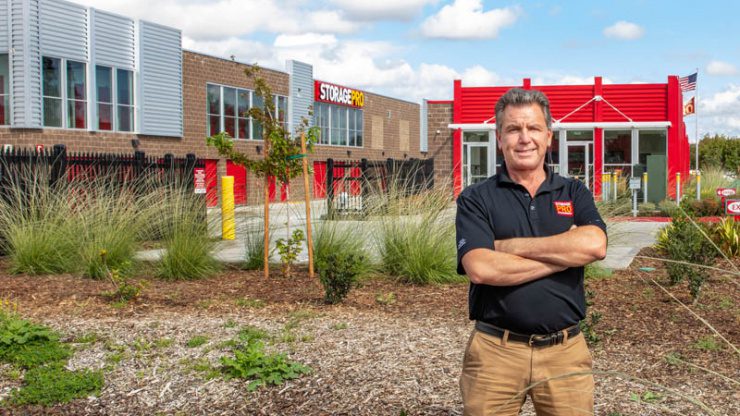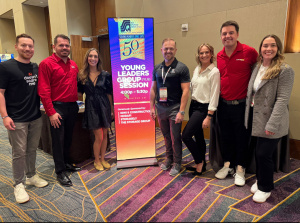Cracking the Mystery of NOI
After more than 20 years in self-storage—a majority of those managing districts across states where the weather, customers, and even the bugs all behaved differently—I’ve come to see operational excellence as the only thing that consistently moves the needle. Buildings help, branding helps, but excellence in the day-to-day is the real engine. As Jim Collins wrote in Good to Great, “Good is the enemy of great.” In storage, “good enough” usually becomes “not good enough” faster than you can say “Rent Now!”
Even after all these years, raising NOI still feels part science, part psychology, and part voodoo. People think the business is simple because we rent space and collect cash. But if you’ve ever tried to hold rates during a tech-fueled economic slowdown in San Francisco or calm down a tenant in Martha’s Vineyard convinced their old record collection is worth more than your car, you know the business is anything but simple.
The funny thing is: storage is resilient—some call it “recession-proof.” But that doesn’t mean your NOI is. In the real world, NOI is always under attack: rising labor costs in Boston, surprise property tax hikes in Pueblo, overbuilding in Las Vegas, and the classic “Oh look, someone else near Tacoma is offering $1 move-ins again.”
The NOI Challenge: Why It Feels Like Wrestling Smoke
Self-storage NOI comes down to two forces:
- Revenue (mostly rent, sprinkled with ancillary income), and
- Expenses (taxes, labor, utilities, maintenance, plus those mysterious vendor fees that multiply like rabbits).
With high interest rates and lenders acting as if they’re allergic to risk, the best way to boost asset value today is simply to lift NOI. A 5% bump can turn into six-figure increases in valuation. Not bad for tightening a few operational screws.
But we’re battling some tough headwinds. The hyper-competitive nature of markets like Los Angeles. Turnover that never seems to slow down due to high-velocity renter migration. And expenses that creep up with the consistency of gravity.
Epictetus said, “No great thing is created suddenly.” He must have been talking about NOI, because getting sustained improvement feels about as sudden as a glacier melting.
Smart Pricing: Where Operational Excellence Starts Paying Rent
If I’ve learned one thing, it’s that you can’t just “set it and forget it” with your rental rates. Is your facility suffering from ‘Bodega Coffee’ Syndrome? Have you ever made the mistake of neglecting rate adjustments, only to wake up one morning and realize you’re renting your valuable 10×10 units for the equivalent of a single, overpriced cup of coffee?
Dynamic pricing solves this—as long as you don’t outsource your judgment to the algorithm. Tools like Hummingbird and others help you adjust rates based on occupancy and comp activity, but operational excellence means using the tool, not letting the tool use you.
Raise rates on tenants who are settled in but remember: a long-term commercial tenant in San Diego paying like clockwork deserves some respect. Losing them over $6 a month is like a high-tech manufacturer in Massachusetts losing a key client over a shipping fee. As Dean Jernigan, a widely respected self-storage leader, once said, “The greatest expense in our business is vacancy.” In this case: not to squeeze every penny, but to build stable, predictable revenue.
Ancillary Income: The Secret Sauce Everyone Overlooks
People tease me about how excited I get about tenant insurance and truck rentals. But I’ve seen truck rentals save a quarter. Literally.
A few favorites:
- Truck Rentals: Offer a free first-month rental, and your move-ins jump. I had a facility in rural Washington that made enough from truck rentals to practically pay the manager’s salary.
- Retail: People will buy boxes if you display them right. One of my managers in San Jose, CA once sold $60 worth of bubble wrap to a young interior designer storing staging materials. I told her she could sell ice to a snowman.
- Tenant Insurance: Make it opt-out. Watch revenue rise. It’s the simplest operational win you’ll ever implement. “You can have the best location in the world, but if you don’t execute operationally, you’re not going to get the returns,” is a quote often attributed to industry veteran Terry Campbell regarding driving revenue streams.
- Smart Units: While some may still categorize Smart Units as “gimmicky tech toys,” the industry is actively evolving. Many forward-thinking owners are capitalizing on this technology, consistently realizing thousands of dollars in enhanced annual revenue.
In Lessons from the Mouse, Dennis Snow says, “Everything speaks.” In storage, the locks, the lights, the gate, the hallway floors—every detail tells your tenant whether you run a “good enough” business or a great one. And great businesses earn more money.
Expansion: The Seductive Mistake (Unless You’re Disciplined)
Everyone wants to build more. More units, more doors, more rent. But expansion is like shaving your head, you better be sure before you do it, because it takes a while to undo.
Only build if your supply-per-capita numbers justify it. Many owners make the mistake of expanding too aggressively into a softening submarket, and then they spend years explaining to their partners why their beautiful new temperature-controlled building sounds like an empty cathedral every time the HVAC kicks on.
Marcus Aurelius said, “What stands in the way becomes the way.” In self-storage, what stands in the way is usually over-exuberance.
Expenses: The Silent NOI Killers
Operational excellence isn’t glamorous, but it’s effective. Here’s where it shines:
Energy
LEDs, solar, smart HVAC timers—they’re not exciting, but they cut utility costs 20–30%. A facility in the sunny SF South Bay dropped 22% in electrical usage after an LED conversion, and ownership thought we’d invented perpetual motion.
Labor
This one’s tough. People matter. But technology helps. Kiosks, online rentals, app access—they all streamline things. The key is cross-training. I once had two managers in Loveland, CO argue for an hour over whose job it was to repaint the bollards. Now I train everyone to do everything. Saves time, saves money, saves headaches.
Vendor Leakage
Vendors tend to add fees to everything. Trip charge? Fuel surcharge? It’s raining today charge? No thanks. Review every invoice and every contract annually. You’ll find savings.
Taxes
Appeal assessments. Seriously. It’s the closest thing to free money we have in this business. “When you can find areas in your business where you’re just leaving money on the table, that’s where you start to really gain on the NOI,” is a sentiment often expressed by industry veteran Greg Ellsworth regarding expense control.
Tenant Retention: Still the Unsung Hero of NOI
A long-term tenant is like compound interest. Quiet, reliable, and surprisingly powerful. Churn costs money in lost rent and marketing. So treat tenants like people. Personalize offers. Call them. Thank them. Host a community event now and then.
As Collin’s flywheel concept teaches, momentum builds through consistency, not heroics. Retention is pure flywheel.
Tighten operations, roll out ECRIs, add smart units, clean up the office, and hold people accountable. Stuff you’d expect, not rocket-science.
As Steve Mirabito says, “Retail is Detail and Retail management means paying attention to the hundreds of small factors that can compromise net operating income” And he’s right.
Closing Thoughts from a Guy Who’s Seen the Cycles
Operational excellence isn’t glamorous. It’s not shiny or loud. It’s the mundane repetition of doing things the right way—even when nobody’s looking. That’s how you build NOI that doesn’t just spike but sticks.
Marcus Aurelius put it perfectly: “The impediment to action advances action. What stands in the way becomes the way.” In storage terms: whatever’s giving you the most trouble—pricing in California, labor in Massachusetts, occupancy in Washington—that’s the place to dig in.
And as someone who has watched this industry evolve from hand-written ledgers to AI-powered pricing tools, I can tell you this much: The operators who stand out in today’s competitive market are the ones who:
- Obsess over the basics
- Treat tenants like neighbors
- Use tech intelligently
- Stay committed to operational excellence, day in and day out
Do that, and the NOI follows. Not overnight. But always.














